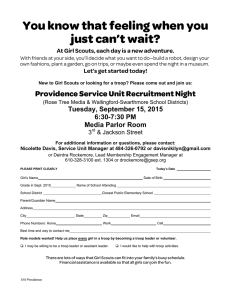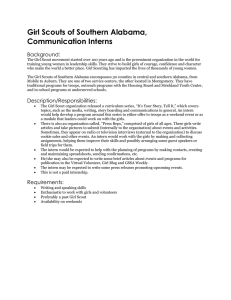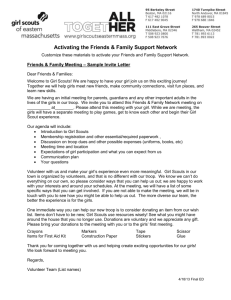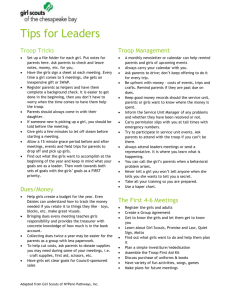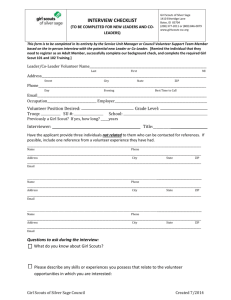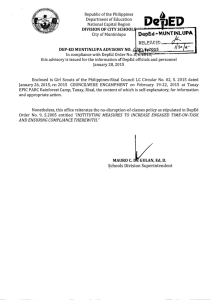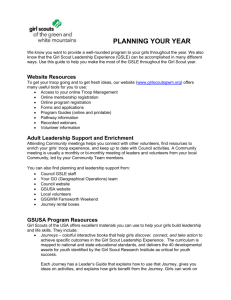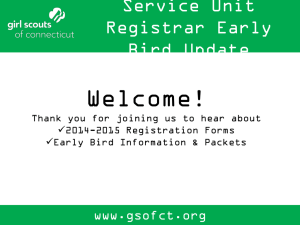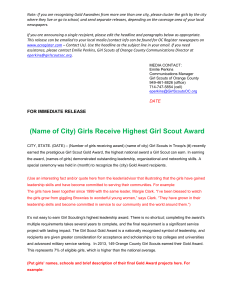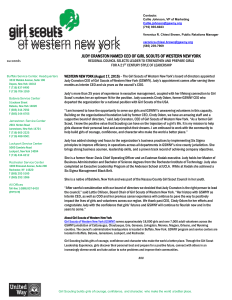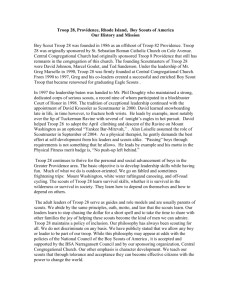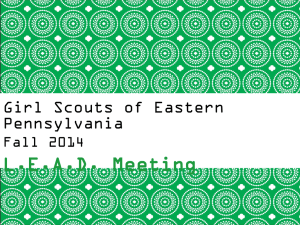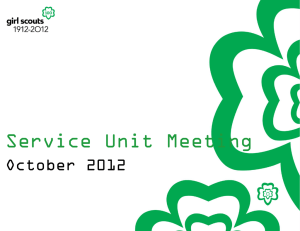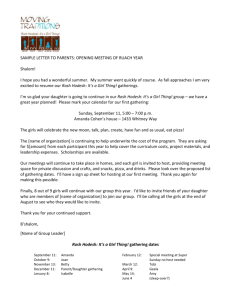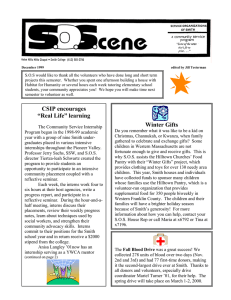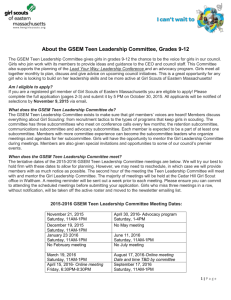Defining Conflict - Girl Scouts of Colorado
advertisement
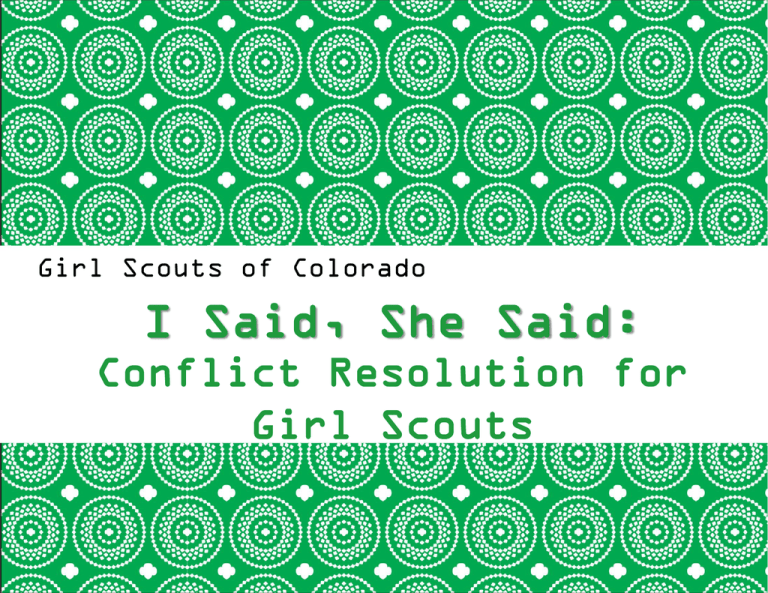
Girl Scouts of Colorado I Said, She Said: Conflict Resolution for Girl Scouts Intro/Kickoff • Introduce yourself to those you don’t know. • Familiarize yourself with the contents of the workbook . • Finish this statement: “In life, conflict is …” What to Expect • Conflict Overview • How to Minimize Conflict • Facilitating Others in Conflict • Tips for Working through Conflict • Close Typical Causes of Conflict • Wants or Needs Differ • Values Differ • Perceptions Differ • Inaccurate or Faulty Assumptions • Expectations Differ Defining Conflict 1. A state of disagreement, controversy, or disharmony. The opposition of mutually exclusive desires, tendencies, etc. 2. Expressed struggle between at least 2 parties, who perceive incompatible goals, Common Beliefs About Conflict • Conflict is negative. • Conflict will resolve itself if left alone. • Conflict must be resolved immediately. • Conflict is destructive. Conflict Spiral Changing your Paradigm about Conflict High Stakes From Crucial Conversations How to Minimize Conflict • Keys to Troop Management • How Girl Scouts Look at Conflict • Tools for Leaders • Your role … How Girl Scouts Look at Conflict • What is GSUSA’s view of Conflict? • Can something good come from a conflict situation within a troop? • What supports/tools are there for you as a leader? 5 Keys to Successful Troop Management 1. Adults who actively work in partnership with girls 2. A place where girls feel secure, trusted and valued 3. Girls’ ownership of activities 4. Girls’ planning activities 5. Girls and adults who respect and like each other Good Boundaries • Boundaries set up expectations • How can boundaries reduce conflict? • What Girl Scout traditions establish boundaries? Group Agreement • • • • Establish common ground Describe observable behaviors Define boundaries May include consequences for violations • In Girl Scouts, should be based on the Promise & Law • Have advantage of being participantled & participant-monitored for better buy-in Your role: Facilitating Others Through Conflict Step 1: Determine Ground Rules How to Fight Fair Step 2: Discuss and Define the Problem What is Going On? Step 3: Jointly Develop a Desired Outcome What Do We Both Want? Step 4: Determine a Plan How Will We Get It? Step 5: Commit to Follow Up Words of Wisdom (Best Practices) When Working Through Conflict: BEFORE • Focus on behaviors and consequences of behaviors; be specific. o Be prepared to explain a specific behavior you want instead of the behavior you don’t want. • Take ownership of your behavior and feelings. o o Think about where you can agree and what YOU are willing to change ahead of time. Ask yourself: “What am I pretending not to notice about my role in this?” • Try to humanize the other person. o Ask yourself: “Why would a reasonable, rational, and decent person do what they are doing?” Words of Wisdom (Best Practices) When Working Through Conflict: DURING • Use active listening behaviors. o Make it safe for others to express their opinions, needs, etc. • Talk tentatively to soften the message: o o o “The fact is…” (vs) “In my opinion…” “Everyone knows that…” (vs) “I’ve talked to 3 others who share my view…” “It’s clear to me ..” (vs) “I’m beginning to wonder …” • Try to remain open to a variety of solutions and compromises. o Encourage testing. Ask: “What am I missing here?” or “I’d really want to hear from you” • Take time out when feelings heat up. Words of Wisdom (Best Practices) When Working Through Conflict: AFTER • Follow up on your commitments. • Hold a brief ‘debrief’ to prompt continuous improvement & learning. o What did we do well? o What could/should we do better next time? How will YOU ‘Take Action’? Write down something that you have learned during this session that you will be able to use with your troop. Questions? Thank you!

